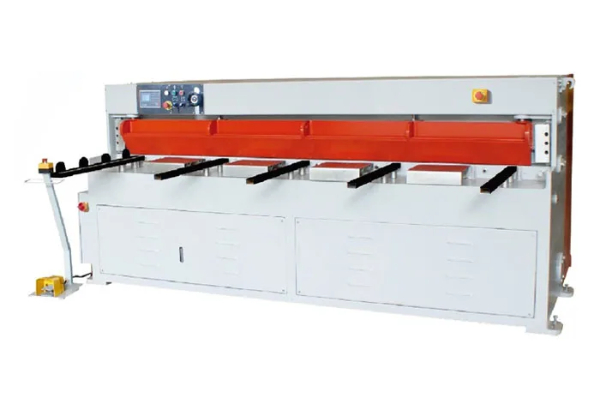
The Evolution of Duct-Making Machines- From Manual to Automated
- By:Metmac
- 2024-08-13
- 204
Since the late 19th century, duct-making machines have undergone significant technological advancements that have revolutionized the manufacturing process. This article, “The Evolution of Duct-Making Machines: From Manual to Automated,” provides a comprehensive overview of the journey from the labor-intensive manual machines to the sophisticated automated systems used today.
Manual Duct-Making
The earliest duct-making machines were rudimentary hand tools used to cut and shape metal sheets into ducts. These manual processes required significant labor, time, and skill. Workers used shears to cut the metal, pliers to bend it, and rivets to join the pieces together. The resulting ducts were often inconsistent in quality and prone to leaks.
Semi-Automated Machines
In the mid-20th century, semi-automated machines emerged to streamline the duct-making process. These machines combined manual labor with automated components, such as rollers for forming the metal and seaming tools for joining the edges. Semi-automated machines improved productivity and accuracy while reducing labor costs.
Computer-Numerical-Control (CNC) Machines
The introduction of CNC machines in the 1980s marked a major leap forward in duct-making technology. CNC machines are computer-controlled systems that automate the entire duct-making process. These machines use CAD (Computer-Aided Design) software to generate cutting and forming instructions. The CNC machine then automatically follows these instructions, producing ducts with precise dimensions and seamless joints.
Fully Automated Duct-Making Lines
Today, fully automated duct-making lines have taken the process to an even higher level of efficiency. These lines consist of multiple interconnected CNC machines that perform all the necessary operations, including cutting, forming, seaming, and even punching holes for connections. Fully automated lines reduce labor costs, improve product quality, and increase production volume.
Advanced Technologies
In recent years, advanced technologies have further enhanced the capabilities of duct-making machines. Laser cutting, for example, provides faster and more precise cuts. Robotic welding eliminates manual labor and improves weld quality. AI (Artificial Intelligence) is also being incorporated into duct-making machines, enabling them to optimize the cutting and forming processes for maximum material utilization.
The evolution of duct-making machines from manual to automated has significantly improved the efficiency, accuracy, and quality of ductwork in commercial and industrial buildings. As technology continues to advance, we can expect even more innovative and efficient duct-making solutions in the future.
-
Advanced Sheet Metal Rolling, Cutting, and Folding Machines for Efficient Fabrication
2025/10/22 -
High-Precision Sheet Metal Bending and Cutting Solutions for Modern Manufacturing
2025/10/22 -
High-Precision Solutions from Leading Sheet Metal Cutting Machine Manufacturers
2025/09/11 -
Reliable Sheet Metal Equipment for Sale to Support Precision Fabrication
2025/07/17
-
Advanced Sheet Metal Rolling, Laser Cutting, and Folding Machines for Precision Fabrication
2025/10/31 -
High-Performance Sheet Metal Bending and Cutting Machines for Modern Fabrication
2025/10/31 -
High-Quality Sheet Metal Equipment for Sale: Efficient Solutions for Modern Manufacturing
2025/10/31 -
High-Performance Sheet Metal Equipment for Sale: Forming and Shearing Solutions for Modern Fabrication
2025/10/22
-
A Guide to the Latest Innovations in Sheet Metal Folding Machines
2024/11/29 -
Key Features to Consider When Investing in a Sheet Metal Folding Machine
2024/11/28 -
Enhancing Precision with Advanced Sheet Metal Folding Machines
2024/11/27 -
How to Choose the Right Sheet Metal Folding Machine for Your Workshop
2024/11/26






